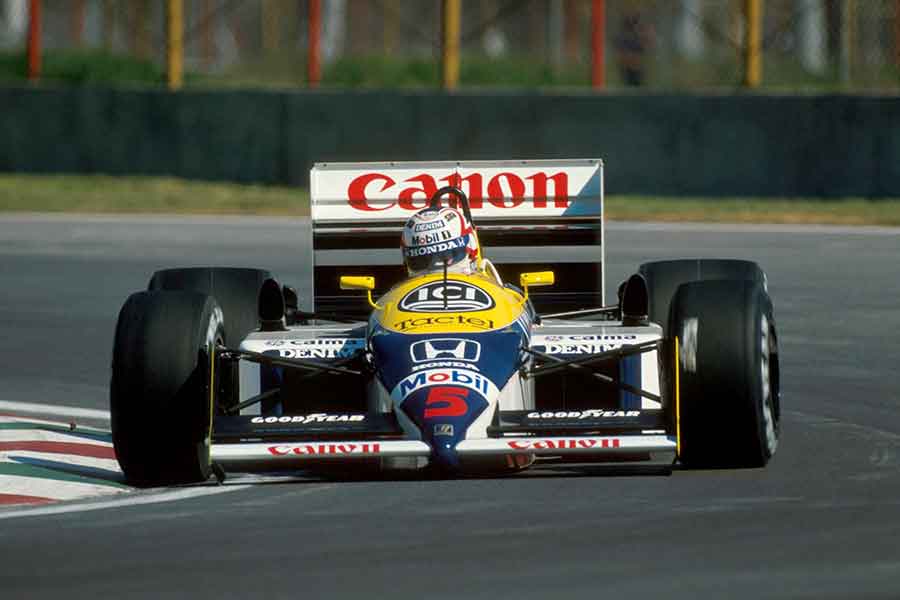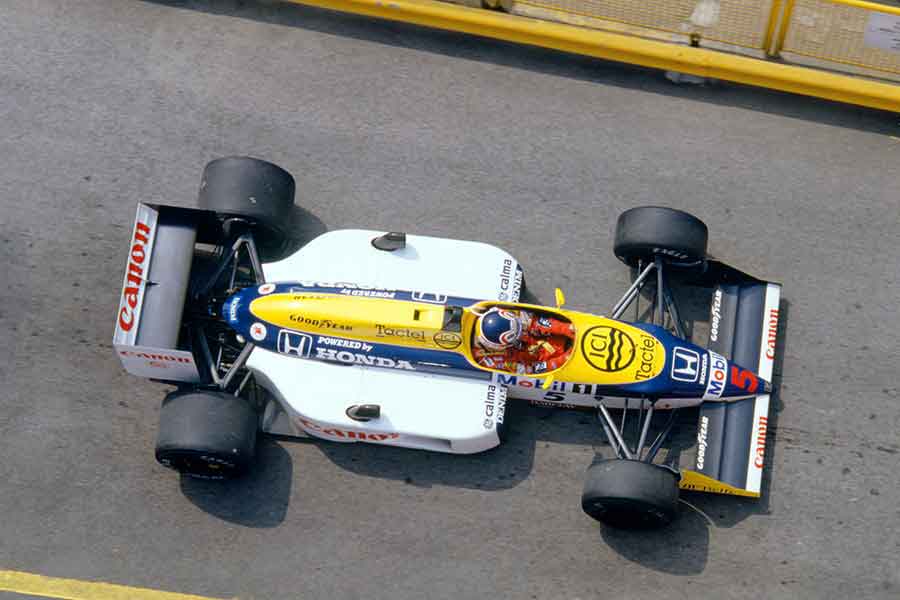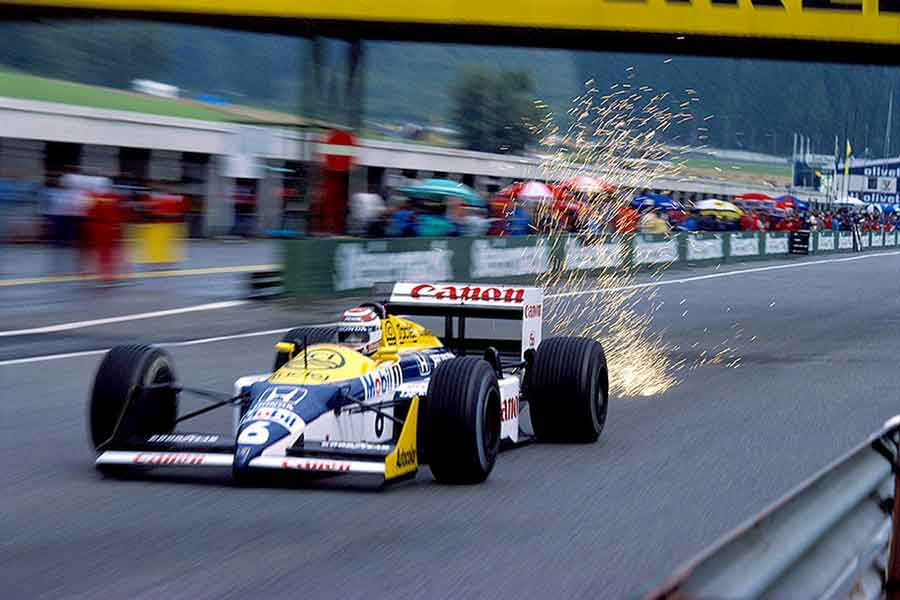Williams FW11B - A Car That Dominated the 1987 Formula 1 Championship
The Williams FW11B was a car which ruled the Formula 1 World Championship in 1987 and won both Drivers’ and Constructors’ championship titles.
More reliable than its predecessor
After success with Williams FW11 in 1986, the team prepared a new car which actually was a modified and upgraded version of the previous model. Designed by Sir Patrick Head and Frank Dernie, Williams FW11B was superior to the most of the cars on the grid that year. The main advantage was a lighter, less complicated suspension which drew much less power from the Honda engine.

Williams FW11B Honda cutaway
Actually, new Williams was a perfect blend of solid engineering, powerful engine, and superior fuel economy, just as it was its predecessor, but was more reliable. That’s why it wasn’t surprising that this car won both titles in 1987. At the same time, it was the last year of Williams’ cooperation with Honda as the Japanese manufacturer left the team and joined with McLaren.
Not so perfect start of the Formula 1 season
Williams kept the same driver line-up from the previous season. Nelson Piquet and Nigel Mansell were among the top drivers of that time and they both were rightfully considered as the title contenders. At the end, the Brazilian became an F1 champion for the third time, while the team won the championship for the fourth time.

NIgel Mansell in Williams FW11B
However, the start of 1987 season wasn’t perfect. Only one victory was scored in the opening five races. Mansell was triumphant at Imola, while Piquet finished 2nd at Jacarepagua Circuit, in Monaco, and in Detroit, after having a bad crash during qualifying at Imola. Ayrton Senna in Lotus-Honda car topped the championship standings but with an advantage of only two points to his compatriot Piquet.
Williams FW11B scored six consecutive wins in the mid-season
The things have turned to the Williams’ favor from the French Grand Prix. The team scored a 1-2 victory with Mansell winning the race. The same outcome was in the following race at Silverstone but Senna still was the leader of the championship, only a point ahead of Piquet and Mansell.

Nelson Piquet, 1987 Brazilian Grand Prix
Finally, Piquet managed to win the race. The German Grand Prix was the eighth round of the season and Brazilian driver for the first time in 1987 was at the highest step of the podium. He also won the next Grand Prix in Hungary, while his teammate was out of points, just like in Germany. However, Mansell bounced back in Austria when he won the race ahead of Piquet.

Nelson Piquet celebrates victory in 1987 German Grand Prix
The Italian Grand Prix was the following race and Nelson confirmed fine form with another win, third in the last four races. Nigel also did well as he finished 3rd at Monza. Now, with five races to go, Piquet had a strong 14 points advantage to Senna in the Drivers’ championship, while Mansell was 20 points behind.
Piquet’s form was more consistent
After the Grand Prix of Portugal, Mansell definitely was out of the title race. He retired fourth time that year, while Piquet was 3rd in the race. The British driver recovered in the following two races. He won the Spanish and the Mexican Grand Prix, while the Brazilian was fourth at Jerez and second at Autodromo Hermanos Rodriguez.

Williams FW11B Honda engine
With only two races remaining, Williams already secured the Constructors’ championship title with a huge advantage to McLaren. At the same time, Piquet needed only a point from the last two races to clinch the title.
Strange way to win the title
Interestingly, Piquet failed to score but became a champion. He was 15th in Japan and retired in Australia but when Mansell crashed during qualifying, it was clear that the Brazilian can be crowned. Injuries put Nigel out of racing for the remainder of the season and he was replaced by Riccardo Patrese for the last race in 1987, but Italian failed to pick more points for the team.

Williams FW11B, Imola, 1987
At the end of the season, one of the best Williams’ car ever had nine wins on his account, as well as 12 pole positions and seven fastest laps.
Williams FW11B Honda technical specifications
Chassis: Moulded carbon composite monocoque
Front suspension: Double wishbones, push-rod operated inboard spring/damper unit
Rear suspension: Double wishbones, pull-rod operated inboard spring/damper unit
Engine: Honda RA167-E V6 Turbo mid-engine longitudinally mounted at 80 degrees, 1.494 cc
Transmission: Hewland/Williams 6-speed manual
Wheelbase: 2.845 mm
Front track: 1.778 mm
Rear track: 1.625 mm
Brakes: Carbon discs, all-round
Weight: 540 kg
Fuel: Mobil
Tires: Goodyear
Video – Nigel Mansell’s Williams FW11B Honda
Photo: pinterest.com racem.org caranddriverthef1.com ridingfastandflyinglow.com autoevolution.com f1fanatic.co.uk



